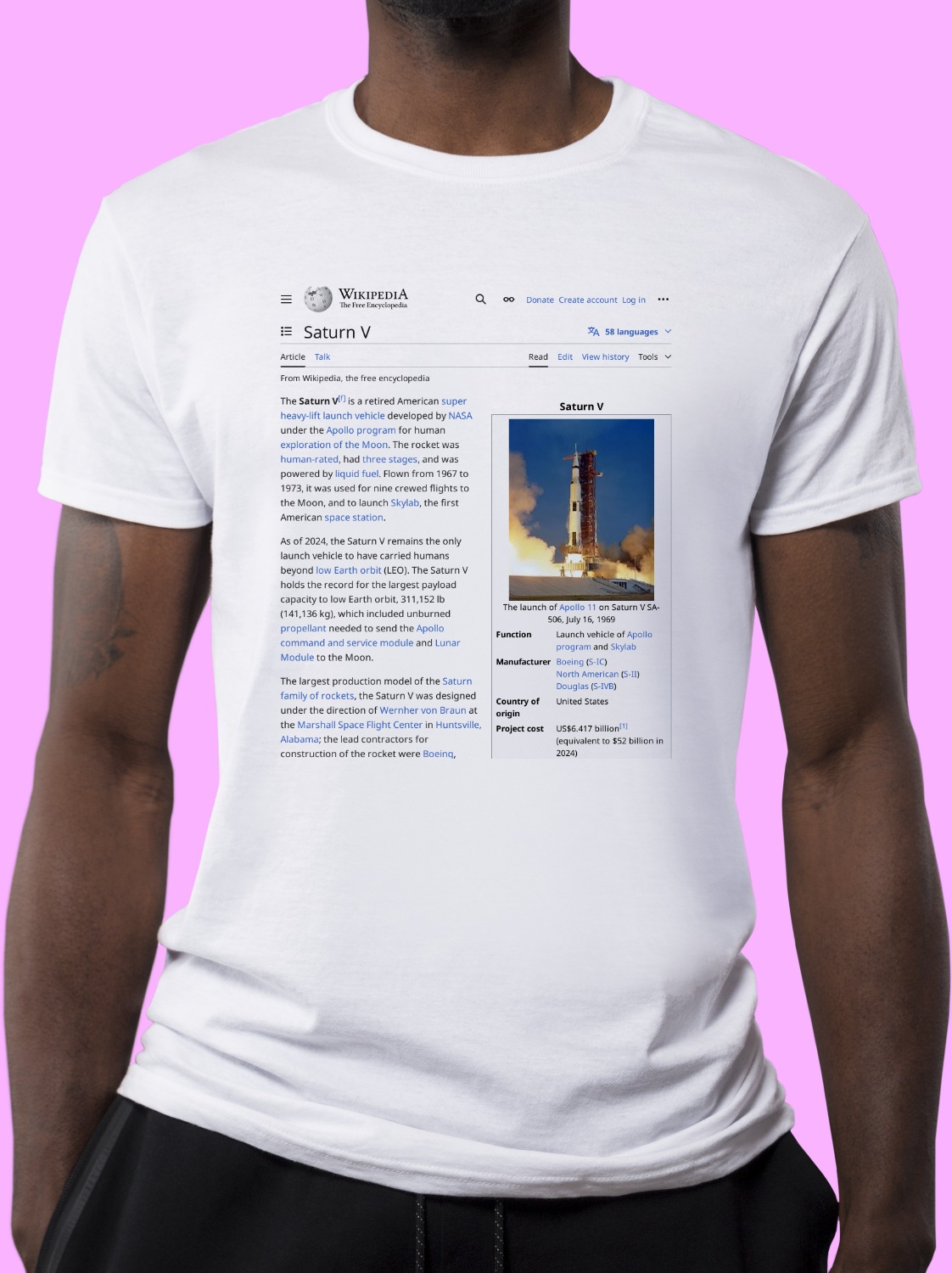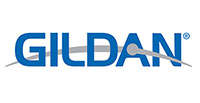
Saturn V Shirt
A classic cotton tee emblazoned with the Wikipedia article on Saturn V ↗.
cotton tee emblazoned with the Wikipedia article on Saturn V ↗.- Preshrunk jersey knit
- Seamless double-needle 2.2 cm collar
- Taped neck and shoulders
- Tear away label
- Double-needle sleeve and bottom hems
- Quarter-turned to eliminate centre crease
The Saturn V is a retired American super heavy-lift launch vehicle developed by NASA under the Apollo program for human exploration of the Moon. The rocket was human-rated, had three stages, and was powered by liquid fuel. Flown from 1967 to 1973, it was used for nine crewed flights to the Moon and to launch Skylab, the first American space station.
As of 2025, the Saturn V remains the only launch vehicle to have carried humans beyond low Earth orbit (LEO). The Saturn V holds the record for the largest payload capacity to low Earth orbit, 140,000 kg (310,000 lb), which included unburned propellant needed to send the Apollo command and service module and Lunar Module to the Moon.
The largest production model of the Saturn family of rockets, the Saturn V was designed under the direction of Wernher von Braun at the Marshall Space Flight Center in Huntsville, Alabama; the lead contractors for construction of the rocket were Boeing, North American Aviation, Douglas Aircraft Company, and IBM. Fifteen flight-capable vehicles were built, not counting three used for ground testing. A total of thirteen missions were launched from Kennedy Space Center, nine of which carried 24 astronauts to the Moon from Apollo 8 to Apollo 17.
About Wikishirt
Wikishirt is a retail experiment that lets you buy a shirt with any Wikipedia Article printed on it. There are over 5 million Wikipedia articles, so we have over 5 million shirts.Check out our homepage for random featured shirts and more!